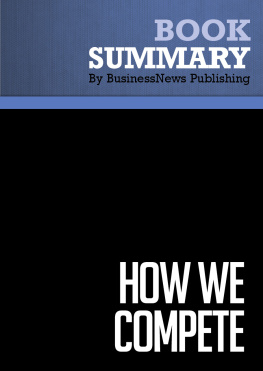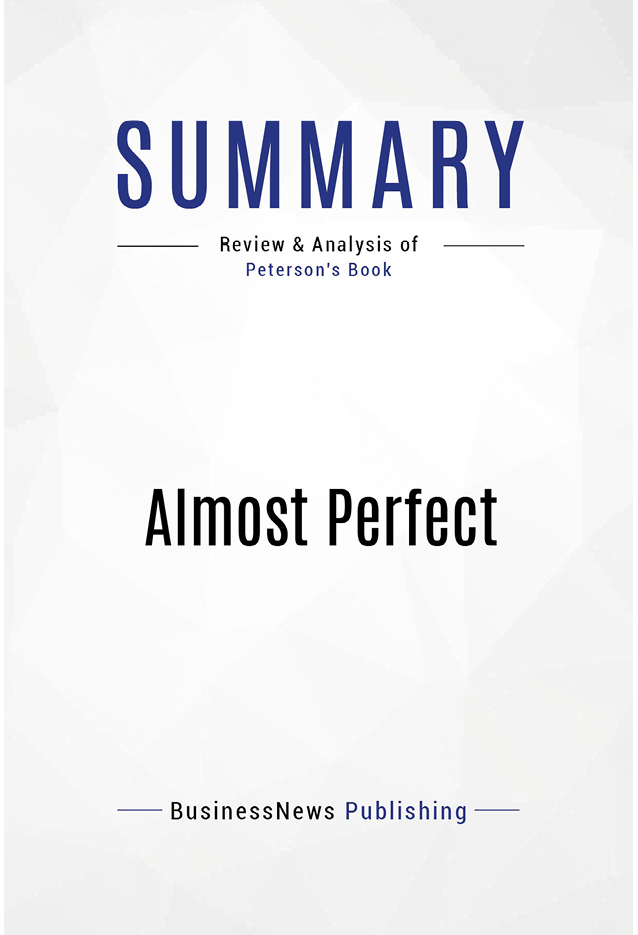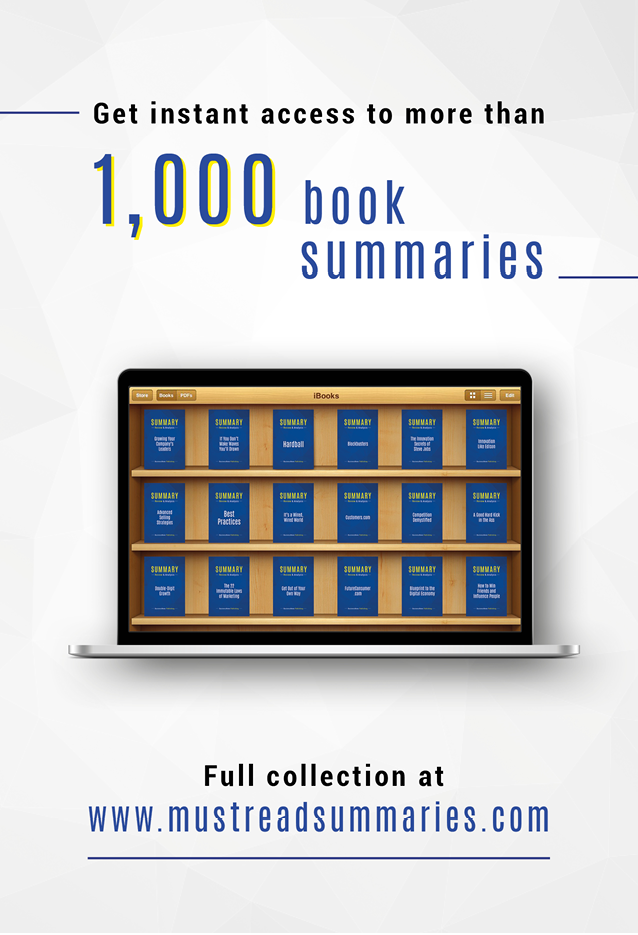Book Presentation
Almost Perfect by W. E. Pete Peterson
Important Note About This Ebook
This is a summary and not a critique or a review of the book. It does not offer judgment or opinion on the content of the book. This summary may not be organized chapter-wise but is an overview of the main ideas, viewpoints and arguments from the book as a whole. This means that the organization of this summary is not a representation of the book.
Summary of Almost Perfect (W. E. Pete Peterson)
1. AN IDEA TAKES SHAPE
In 1977, Bruce Bastian, a university student at Brigham Young University in Provo, Utah wrote a Master of Science thesis on 3-D computer graphics. Bastian was a passionate member of the universitys marching band called the Incomparable Cougar Marching Band . His main motivation in going into 3-D graphics was to be able to display the bands marching formations as they would be seen from any seat in a stadium.
Bastians thesis caught the attention of Alan Ashton, the Professor of Computer Science at Brigham Young University. When Bastion graduated, Ashton talked him into coming to work for a new company he was forming to write word processing software.
Ashton was exceptionally well suited to starting a software company. He had earned a Ph.D. at the University of Utah which was one of the first universities in the world to offer a doctorate in computer science. Among his fellow students were a number of computer pioneers who would later attain fame and fortune including John Warnock (the founder of Adobe), Bob Evans (of Evans and Sutherland) and Alan Kay who would go on to work at Xerox PARC and Apple Computer.
In the early days of computers, most word processors used embedded codes with formatting instructions. That meant a document would contain cryptic key words in the body of the document to specify how each section was to appear. To be able to visualized how any document would appear when printed, you had to know what each key word meant.
Alan Ashtons concept was to develop a word processor in which a document would appear on the screen exactly how it would look when it was printed. He also had other innovative ideas including adding the ability to scroll through a number of pages, using function keys for different features and eliminating different modes. These concepts are now accepted industry standards, but at that time they represented quite significant advances.
The real genesis of the new software company came when Ashton received a phone call from Don Owens, a salesman working for a leasing company in California. Owens is a classical entrepreneur with a surplus of creative ideas and a total absence of money. Owens suggested they should form a company to write word processing software for Data General computers. They never really formalized the ownership structure, but it was decided Owens would start and fund the company, while Ashton and Bastian would develop the software. They called the company Satellite Systems Inc. (The name was chosen because SSI was a good acronym, something every computer enthusiast thought was very important in those days.)
By the time Alan Ashton and Bruce Bastian had signed an office lease and ordered a computer, Don Owens broke the bad news to them - he was unable to raise the funding needed to start the company.
Ashton helped Bastian find a job as a programmer at Eyring Research of Provo, Utah. Once he was working there, Bastian found that Eyring Research had a contract to deliver a Data General computer to the Orem City Council, and that part of this contract specified Eyring Research was to include a word processing package.
Ashton and Bastian re negotiated Bastians employment contract with Eyring Research. Eyring agreed to pay Bastians salary while he was developing the word processing package so they could fill their contract with the Orem City Council and deliver a Data General computer with word processing software.
Ashton would help out with designing the software for no pay. In return, Bastian and Ashton could retain ownership of the finished software.
So, with the timely help of Eyring Research, Ashton and Bastian were able to start work on their word processing software after all. Ashton concentrated primarily on the printing portion of the software, while Bastian worked on the screen portion.
By early 1979, Eyring Research felt the software was well enough advanced to deliver to the Orem City Council, although Bastian and Ashton still wanted to improve it further. This turned out to be another lucky break, because the Orem City Council gave them permission to use its computers without charge as long as they were provided with a free copy of any new software developed.
Bruce Bastian and Alan Ashton continued to work on a version of the word processing software they could sell commercially. Bastian borrowed some money from his father to pay the bills while he worked away feverishly, while Ashton continued to work at the university full time and on the software in the evenings and on weekends. To generate some money in the meantime, they developed a simplified version of the word processing software, which they called P-Edit.
As neither Bastian nor Ashton had any experience selling software, they again turned to Don Owens for help. They decided to form a company to sell the software, with each of them owning one-third of the new company which was called Satellite Software International. (Again, the acronym of SSI was important - they wanted to be the next IBM, NCR, DEC or HP).
2. GETTING STARTED
In March 1980, SSI started operating, offering a version of P-Edit which was renamed SSI*WP for a retail price of $5,500. (The companys cost to manufacture a complete package was about $25, so the profit margin was quite impressive). SSI*WP worked only on Data General equipment and with one type of printer, but the software was quite reasonable and faced little competition. Within a few months, SSI was selling two or three copies of the word processing software each month.
At this stage, SSIs only full-time employee was still Bruce Bastian. Alan Ashton continued to work at Brigham Young University and Don Owens still worked at Itel Leasing. Bastian answered the phones, mailed out information packages by day and wrote software by night.
Starting a software company in the 1980s usually involved four rounds of financing:
- In round one, the founders tend to use their own money and any begged from friends and relatives to do their market research and write a business plan.
- Next, the business plan is usually shown to private investors to raise funds for product development.
- Once the product is developed, the founders normally go back to existing investors for additional funds to start marketing the new product.
- When the product is successful in the marketplace, an Initial Public Offering was made where all the original investors sell some stock to the public at a large profit. The founders end up with a smaller proportion of the stock but a lot of money.
By contrast, SSI had skipped the market research and gone straight to round 2. When the marketing of round 3 started, they had bought in Don Owens. There were no external investors, and the company was completely owned by Bruce Bastian, Alan Ashton and Don Owens.





